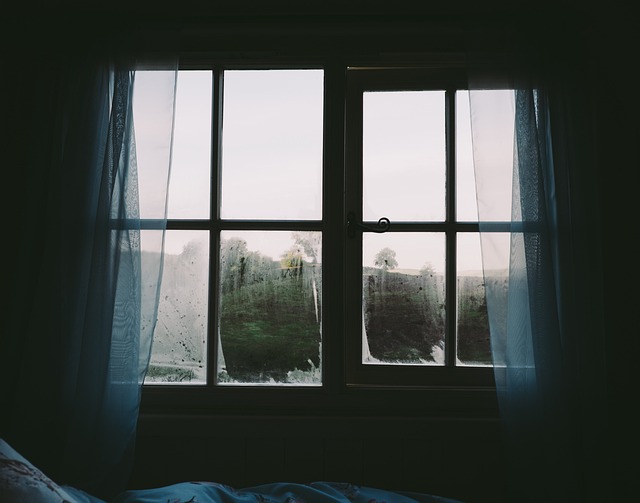No matter if you’re building from scratch or remodeling existing space, selecting window styles requires careful thought. Selecting energy-saving windows that maximize natural lighting while complementing your house style are among the many factors you should keep in mind when making this important decision.
Casement and awning windows open by cranking a handle, making them the ideal solution for windy or rainy climates, or areas where opening a window could pose security risk.
Replacement windows project description feature sashes that tilt inward for easy cleaning access. Whatever window style you choose, you can find options in a variety of materials, colors, and sizes to fit your budget.
Double-Hung
Double-hung windows feature upper and lower sashes that can be moved vertically. They are most commonly found in homes that embrace a classic or historic aesthetic.
Double-hung windows provide greater ventilation and airflow, making them the ideal solution for rooms on the second-story or hard-to-reach areas of your home. Furthermore, their tilt-in sashes make cleaning much simpler.
Single-Hung
Single-hung windows feature a bottom panel (known as a sash) that can move vertically while keeping the upper portion stationary, making cleaning easy and commonplace in older homes with traditional aesthetics.
On the downside, single-hung windows can be tricky to clean from inside if you want to reach the exterior side of the glass and don’t provide as much ventilation; double-hung windows on the other hand offer greater air circulation through both top and bottom opening mechanisms, offering easier maintenance.
Sliding
Sliding windows open horizontally on tracks from one side to the other and are ideal for tight spaces that lack enough room for swinging outward-opening windows.
Glass walls offer unimpeded views and allow in lots of natural sunlight, making your room seem brighter and larger. Cleaning them should also be relatively effortless. Over time however, they tend to develop air leaks which compromise your home’s energy efficiency – so it is vital that these issues be addressed as soon as possible in order to prevent future issues.
Bay
Homeowners looking for window replacement and new construction projects want windows that offer energy-saving perks, optimize natural lighting and provide timeless style. Gaining knowledge on different types of windows will enable you to identify their features and benefits.
Hung windows open vertically by sliding their sashes up and down, while single-hung styles feature a fixed top sash that offers less flexible ventilation options than their double-hung counterparts.
Bay and bow windows feature several angled window panels that protrude past an exterior wall to form a cozy nook-like space, ideal for kitchens and living areas.
Bow
Double-hung windows, popularly found in farmhouse-style homes, feature bottom and top sashes that move up and down for ventilation purposes, as well as easy cleaning features and an aesthetic that complements traditional home styles.
Bay and bow windows use angled window panels to form an indented space that serves as the centerpiece for living rooms and family rooms alike. Their multiple window panes bring plenty of natural light while offering views of the front or backyard landscape.
Picture
Picture windows frame the view while optimizing natural light while blocking air entry. While these fixed windows don’t open or close themselves, they can be combined with operable ones like awnings or casements to add flexibility and ventilation.
Before choosing the appropriate window style for your home, take into account its architectural style and needs. While certain window designs work better with certain architectural styles than others, others might appear disjointed or out of place.
Deadlite
As you build or renovate a home or replace windows, there are countless window styles and types to consider when making decisions. Below you can discover more information on their average costs, functionality and aesthetics.
Double-hung windows feature two sashes that slide vertically to overlap one another, providing ventilation and visibility. Glass block windows are ideal for bathrooms and basements as they add light without blocking views. Jalousie windows use glass slats that open and close like blinds to manage airflow, providing more ventilation control.
Hopper
Window types differ widely in their ability to offer energy savings and enhance natural lighting, and in their cost and placement preferences.
Double-hung windows are a top choice among homeowners because of their convenient double movable sashes that slide up and down for easy ventilation, especially in second-story rooms that need lots of airflow.
Awning windows open using hinges at the top and are typically found in basements or bathrooms. Also referred to as hopper windows.
Oriel
Window selection is an integral component of any remodeling project, from energy savings and aesthetic appeal. Select the best windows to transform your home’s energy efficiency and add architectural style.
Double-hung windows feature two operable sashes (moving panels), making them highly sought after due to their classic aesthetic and easy operation. Their two operable sashes enable fresh air from below while simultaneously venting away warmer air through the top pane.
Single-hung windows feature one sash that moves up and down. They’re easier to maintain than double-hung versions but may be less energy efficient. Replacement windows in Alberta are often found in single-hung styles.






Recent Comments